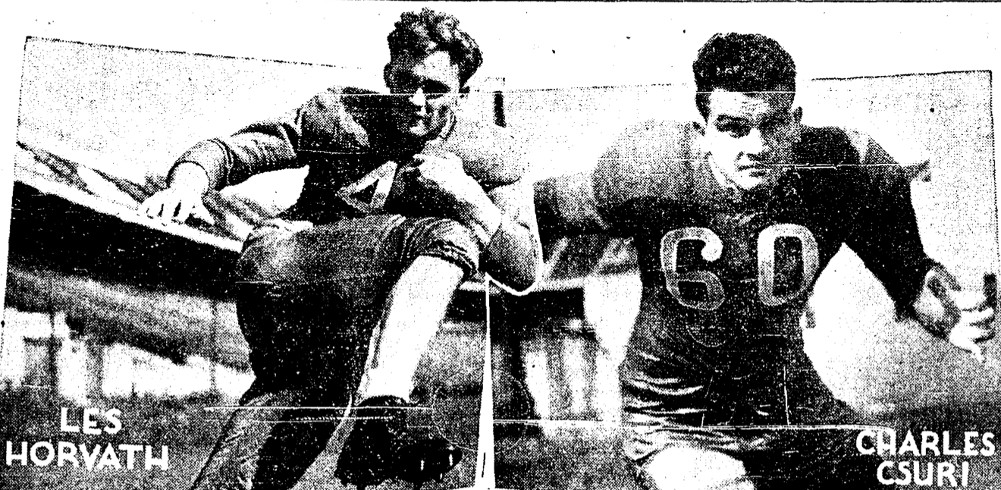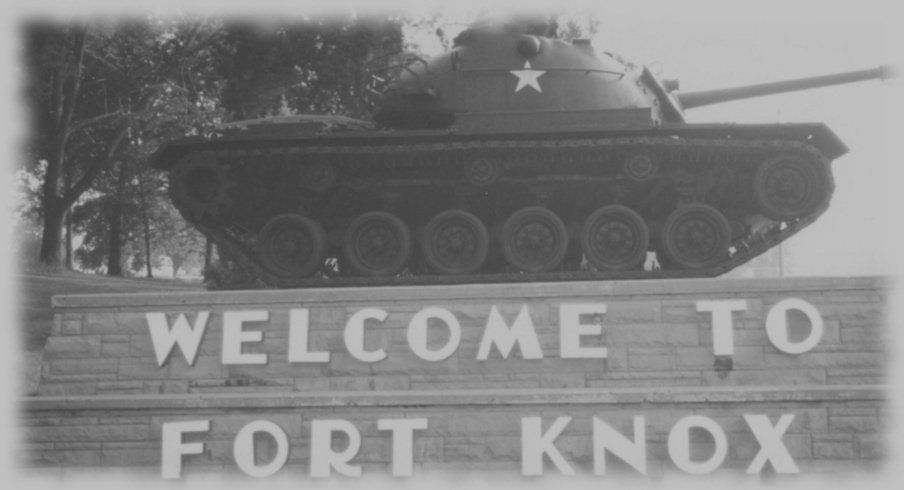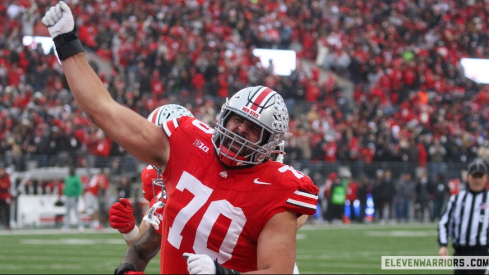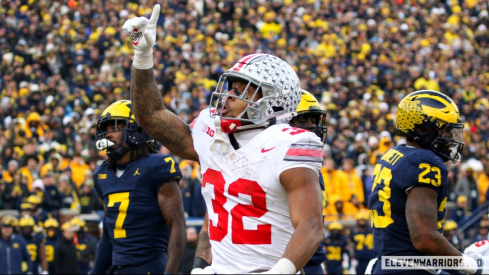Ohio State has yet to play the U.S. Military Academy, but it's played representatives of the U.S. Army before.
The strategy for both sides on Saturday afternoon has already been set.
The Buckeyes will enter Ohio Stadium tomorrow afternoon with a unique advantage relative to the U.S. Army. The Buckeyes will be bigger and more athletic across the board. It will use its size and power and a more "conventional" offense to push back the smaller Army defensive front.
Army is smaller across the board. Its typical defensive lineman is around 6'3" and 265 pounds. Ohio State's typical offensive lineman is around 6'6" and 312 pounds. This amounts to a full three inches and almost 50 pounds separating the typical player in the trenches. Army is aware of this limitation and builds its defense, as well as its offense, around speed rather than size.
This is the complete opposite of the dynamic the last time Ohio State played a football team representing the United States Army.
Ohio State opened the 1942 season by playing host to the Fort Knox Armoraiders from the famous U.S. Army base in Kentucky. The onset of World War II led to the proliferation of these football programs around the country, all of which competed in the NCAA. Army and Navy became world-beaters at this time and other programs like the Iowa Pre-Flight Seahawks and Great Lakes Navy Bluejackets quickly became mainstays in the AP Top 25.
Fort Knox's nascent program did not operate at that high level but it had the same perks these other programs had. Conscription and constant training prior to the onset of specialized football training and nutrition regimens gave the program a wealth of talent and a considerable athletic advantage over its competition.
This shows up in noticeable ways in Fort Knox's roster. The average age on the roster was 24, much older than the schoolboy roster Ohio State had. Some players, like 29-year-old and former national champion Golden Gopher tackle Dwight Reed, were even approaching 30. Many had just come from college rosters. Columbus native C.N. Gotterdam had just concluded a career at Alabama. Tackles F.J. Lopp and Russell Clausen just graduated from the University of Wisconsin and LSU. Most of Fort Knox's backfield had just graduated from Michigan State.
Three-fourths of the roster had at least some college or semi-pro experience and only one player, 19-year-old halfback Jack Speier, was a teenager. By contrast, the bulk of Ohio State's playmakers were college sophomores.
This almost literal men-against-boys dynamic showed in the sheer size disparity that favored the Armoraiders over the Buckeyes. The entire Fort Knox roster outweighed Ohio State's roster almost 20 pounds to a man. Fort Knox's line averaged 215 pounds tackle to tackle while Ohio State's line averaged 195 pounds. This manifested in the backfield as well. Fort Knox's John Moody was a 218-pound fullback that just concluded a four-year career at Morris Brown College. He was a full 15 pounds bigger than Bill Willis, Ohio State's biggest lineman.
Second-year head coach Paul Brown knew he had problems entering the game. It was common knowledge Fort Knox was bigger, stronger, and more mature. It was also well-established that stars like Dwight Reed and John Moody were better individual players than anyone Ohio State had on the roster. Brown, unaware of what exactly Fort Knox would do strategically, otherwise anticipated Fort Knox would run the same offense Notre Dame did at the time.
In other words, Paul Brown anticipated Fort Knox would arrive at Ohio Stadium and expect that its men would overwhelm Ohio State's boys. Brown's Buckeyes needed both its own gameplan and an unexpected glaring weakness on the Armoraiders to rout the visitors from Fort Knox, 59-0.

Ohio State's coaches worked to neutralize Fort Knox's undeniable size advantage in the trenches with two tactics on defense and offense. On defense, the Buckeyes engaged in constant defensive shifts before the snap. It substituted liberally too, ensuring that star linemen like Bill Willis and Charles Csuri had the stamina to play later into the games if necessary. This confused the much bigger Fort Knox front and made it difficult for the Armoraiders to take advantage of their offensive strength. It gave Ohio State the stamina to play a four-quarter game as well.
On offense, the Buckeyes abandoned any pretense of Gene Fekete and Les Horvath running through Fort Knox's defensive front. Instead, both ran around the Fort Knox defensive front. Fekete and his substitute, Dick Palmer, combined for two touchdowns each. Les Horvath added a touchdown of his own. All told, the Buckeyes scored nine touchdowns against Fort Knox with the final score indicative of Ohio State's 5/9 conversion rate for points after the try.
| TEAM | 1Q | 2Q | 3Q | 4Q |
|---|---|---|---|---|
| Ohio State | 13 | 6 | 20 | 20 |
| Fort Knox | 0 | 0 | 0 | 0 |
Unwittingly, Ohio State exploited a weakness in Fort Knox's game plan of which it was unaware. The Armoraiders had only opened practice two weeks before this game. Their obligations to training for the war precluded having the kind of practice sessions Fort Knox coach Joe Bach wanted. The miscommunication showed as the experienced and more mature Fort Knox squad could not solve the conundrums Ohio State threw at it.
The 59-0 win in the season-opener was the start of a magical season for Ohio State. The Buckeyes finished 9-1 with just the one loss at No. 6 Wisconsin in the middle of the season. The finish was good enough to secure national championship honors from the Associated Press. It was Ohio State's first claimed national championship.
The Buckeyes will host the Army Black Knights on Saturday in the first ever encounter between two programs that combine for 11 national championships. The matchup has great intrigue for fans of the history of the game.
However, it's not Ohio State's first encounter with a representative of the U.S. Army. That last encounter is unique for pre-game dynamics in stark contrast to how fans view the upcoming game on Saturday. Ohio State was the younger and significantly smaller team playing a team comprised of much bigger men.
Speed and precision over size and strength won the day for the Buckeyes in 1942. 75 years later, those roles will flip when the Buckeyes host the Black Knights.


